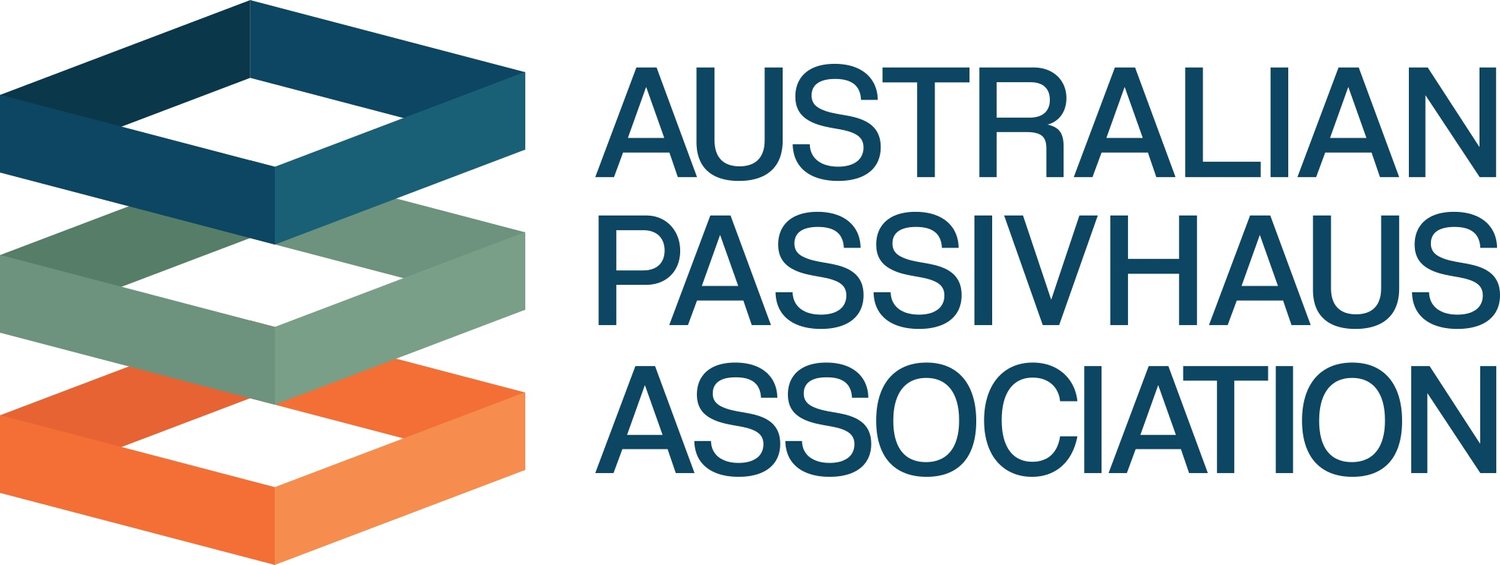PassivCourtyard
Description: Certified Passivhaus Plus
Building Type: Detached single family home
Location: Strathfield South, NSW 2136
Number of Apartments/Units: 1
Treated Floor Area According to PHPP: 164m2
Construction Type: Timber Construction
Year of Construction: 2020
Description
This home breaks all the passivhaus rules; poor orientation, sprawling form, complex roofs, too much volume; yet it works like a charm! It is a demonstration of the Passivhaus Standard at its best, performance driven design showing that, in the right hands, it is a flexible, adaptable Standard that can deliver healthy, comfortable buildings on ‘imperfect’ sites.
This home replaces a defunct weatherboard cottage that was well past its use by date. Once renovation was ruled out, the challenge of north to the street and a sloping block to the south was wholeheartedly embraced.
A north facing courtyard gives sufficient solar exposure for winter warmth while providing a sheltered space for outdoor dining when desired. The courtyard drives the planning which resolves elegantly in a connecting green roof that bridges the traditional appearance of the street elevation with the need for volume to the rear.
The curve of the ceiling accentuates the drama of the double height void while concealing the ventilation ductwork necessary for high performance homes. The simple lighting provides a great backdrop for the evolving artwork of this growing family.
The main bedroom enjoys the privileged view of the green roof which is taking now hold and providing visual relief as well as doing its part for mitigating the urban heat island effect.
A hardwood timber staircase and batten screen partition the living and dining areas. The forest-like rising of blackbutt adds depth and texture to the space, contrasting well against the burnished concrete floor.
The home is all-electric with just a single split system providing climate control as a supplement to the passive performance. High performance uPVC windows with aluminium facing externally provide a low maintenance solution.
Locally sourced, low embodied energy cladding materials were specified to limit the footprint of the home as much as practical.
Favourite Features
That the clients love it! Proving that passivhaus can apply to non-boxy geometry.
The Design/Build Process
It went very smoothly even throughout COVID.
The Brief
To replace a defunct weatherboard cottage with a home that is fit for the future.
Project Members
Architecture: Envirotecture
Builder: Mark D'Amico from Distinct Building Services
Building Services: Envirotecture
Building Physics: Envirotecture
Landscape Architecture: Elke Haege
Certifier: DetailGreen - Luc Plowman
Thermal Envelope
Exterior wall: 90mm timber frame as service cavity 6mm OSB Proctor Wraptite SA 50mm PIR Battens and cladding
U-value: 0.511 W/(m2K)
Basement floor / floor slab: Concrete waffle pod slab on ground with insulated edge
U-value: 2.257 W/(m2K)
Roof: Structurally Insulated Panel
U-value: 0.263 W/(m2K)
Frame: Logikhaus, LogikWin uPVC w al cladding
U w-value: 1.04 W/(m2K)
Glazing: U g-value = 0.53 W/(m2K)
G -value: 53 %
Mechanical Systems
Ventilation: Sabiana, ENY-SP-280
Heating installation: 5kW Mitsubishi Electric reverse cycle air conditioner
Domestic hot water: Sanden heat pump
Additional information
Ecological aspects: 3,500litres rainwater tanks
PHPP Values
Climate: Warm
Air tightness: n50 = 0.51/h
Annual heating demand:13 kWh /(m2a ) calculated according to PHPP
Heating load:14 W/m2
PER demand (renewable Primary Energy): 39 kWh /(m2a ) on heating installation, domestic hot water, household electricity and auxiliary electricity calculated according to PHPP
Generation of renewable energy: 91 kWh /(m2a ) based on the projected area
Cooling load: 20 W/m2
Cooling and dehumidification demand: 14 kWh /(m2a ) calculated according to PHPP










